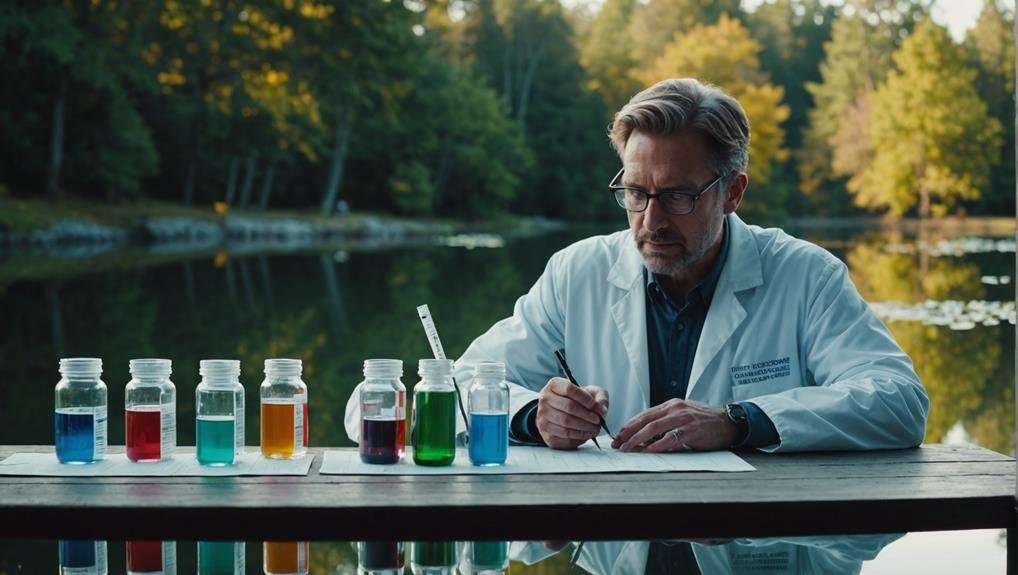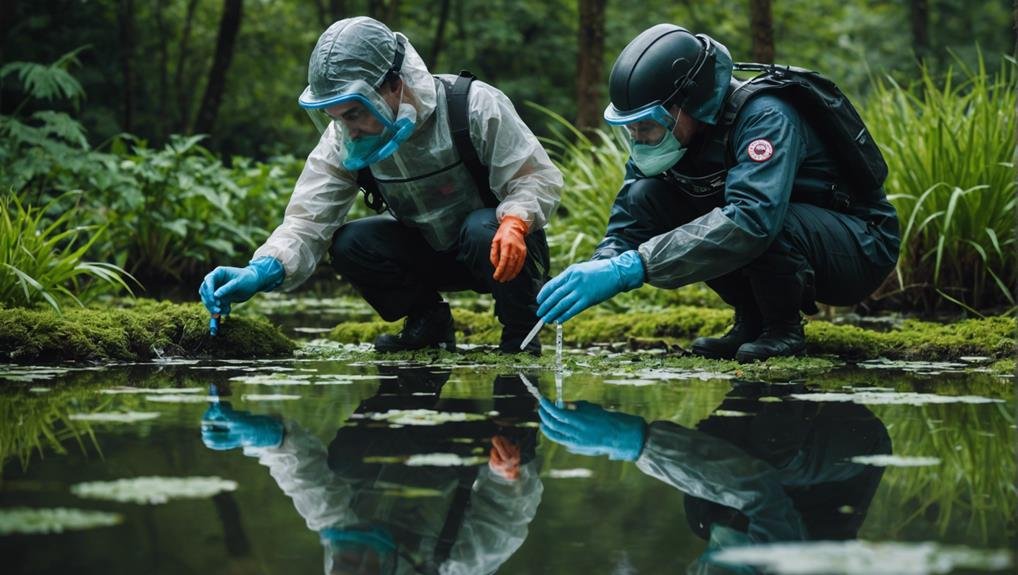Testing pond water is crucial for maintaining a healthy ecosystem. To ensure the well-being of fish and plants in your pond, it is essential to use reliable test kits to measure key parameters such as pH, ammonia, nitrite, nitrate, and hardness. These tests help in ensuring that the water quality is within the ideal range for aquatic life to thrive.
For optimal conditions, aim to keep the levels of ammonia below 0.5 ppm, nitrite below 0.25 ppm, maintain a pH range between 6.5 to 9.0, and hardness levels between 5 to 15 ppm.
Regular testing, ideally every two weeks during warmer months and monthly in cooler months, is necessary to monitor and maintain the balance of these parameters in the pond water.
By staying on top of these measurements, you can take proactive steps to prevent issues such as algae blooms and other imbalances in the pond environment. Investing time in understanding and managing these water parameters will contribute to a flourishing aquatic habitat for your pond inhabitants.
Understanding Pond Water Quality
In order to maintain a healthy pond ecosystem, it's crucial to understand the key factors that impact water quality. One significant aspect is the nitrogen cycle, which transforms harmful ammonia into nitrite and then into less harmful nitrate. Ammonia, typically generated from fish waste and decaying organic matter, can be toxic to aquatic life if not properly managed. Regular testing allows us to monitor ammonia levels and ensure they remain at safe levels.
Another important factor to consider is the pH level of the pond water, which indicates its acidity or alkalinity on a scale from 0 to 14. Fish and other aquatic organisms thrive within specific pH ranges, making it essential to maintain balanced levels.
Water hardness, measuring the concentration of calcium and magnesium, also plays a vital role in supporting the health of the pond's inhabitants.
Furthermore, dissolved oxygen is critical for the well-being of aquatic life. Insufficient oxygen levels can lead to difficulties for fish and beneficial bacteria to survive. While we often introduce oxygen through aeration techniques, monitoring oxygen levels is key to verifying the effectiveness of our actions.
Testing Procedures and Kits
Choosing the right testing procedures and kits is crucial for effectively monitoring and maintaining the water quality of your pond. It's essential to use high-quality test kits that can measure key parameters such as pH, ammonia, nitrite, and nitrate. These tests play a vital role in detecting any issues and taking necessary steps to ensure the health of your pond.
To begin, testing the pH levels is important to ensure that the water's acidity or alkalinity is within the optimal range for your pond's inhabitants. Monitoring high levels of ammonia is also critical as it can be harmful to fish. Regular testing for nitrogen levels, including nitrites and nitrates, is essential for understanding the nitrogen cycle in the pond and maintaining beneficial bacteria.
Additionally, testing for General Hardness (GH) and KH levels (carbonate hardness) is recommended. GH impacts the health of your fish and plants, while KH levels influence the pond's buffering capacity, helping to stabilize pH levels.
Following precise instructions, collect water samples and add the necessary reagents for testing. It's important to ensure that pumps and waterfalls are functioning correctly during testing to obtain accurate results. If any water quality issues are detected during testing, consider performing regular partial water changes to address them.
Keeping detailed records of test results over time will help you track any changes and ensure that your pond remains in ideal conditions.
Interpreting Test Results

Understanding test results is essential for assessing our pond's water quality and taking necessary corrective actions. Maintaining ammonia levels between 0-0.5 ppm is crucial to protect aquatic life from harm. Elevated levels can stress or even be fatal to fish, underscoring the importance of close monitoring.
Similarly, nitrite levels should be kept below 0.25 ppm to prevent health risks to our fish.
Water hardness, as indicated by GH (General Hardness) levels, should ideally fall within the range of 5-15 ppm. This balanced mineral content supports the overall health of our pond water.
pH levels play a vital role as well, with an optimal range of 6.5-9.0 supporting a stable and healthy pond ecosystem.
Nitrate levels also require attention, ideally staying between 0-0.3 ppm. Elevated nitrate levels can trigger algae blooms, leading to oxygen depletion and harm to aquatic life.
Common Issues and Solutions
Pond enthusiasts often face the challenge of unbalanced KH levels in their water, impacting the overall health of their pond ecosystem. Low KH levels can result in acidic conditions that are harmful to aquatic plants and the pond environment. To maintain a balanced pond ecosystem, it's crucial to keep KH levels within the ideal range of 5-10 ppm through regular water testing.
High pH levels are often caused by an imbalance in KH levels. One effective way to address high KH is by introducing plants like Anacharis or Water Lettuce, which naturally help lower these levels. Conversely, if KH levels are too low, adding crushed coral or epoxy rocks can gradually raise them by releasing calcium carbonate to stabilize pH levels.
Keeping track of water quality through regular testing is essential for monitoring KH levels and ensuring good water quality in the pond. By understanding and addressing common issues like unbalanced KH levels, pond enthusiasts can maintain a healthy ecosystem and promote the well-being of aquatic life in their ponds.
Regular Maintenance Tips

Maintenance is crucial for a healthy pond ecosystem, so it's important to regularly test the water every two weeks in warmer months and monthly during cooler seasons. These tests help us keep an eye on water quality, allowing us to catch any issues early on and maintain a thriving pond environment.
Water testing is essential for detecting nutrient imbalances that can lead to algae blooms. Keeping an eye on pH, ammonia, nitrite, nitrate, and KH levels is key to ensuring the health of our pond. By establishing a baseline of water quality through regular testing, we can quickly identify any deviations and take necessary actions.
Consistent water testing enables us to address any problems before they escalate. For example, if we notice an increase in ammonia levels, we can take steps to protect our fish and plants.
Conclusion
In caring for your pond, it's crucial to regularly test the water quality to maintain a thriving ecosystem. Testing allows you to detect potential issues early on and take proactive measures to prevent them from escalating.
By using reliable testing kits and understanding the results they provide, you can make informed decisions about how to best care for your pond.
Remember, a healthy pond doesn't maintain itself; it requires consistent attention and care. By staying vigilant and addressing any issues promptly, you can ensure that your pond remains a beautiful and balanced environment for aquatic life to thrive.
So, make testing a regular part of your pond maintenance routine and keep your pond healthy for years to come.

